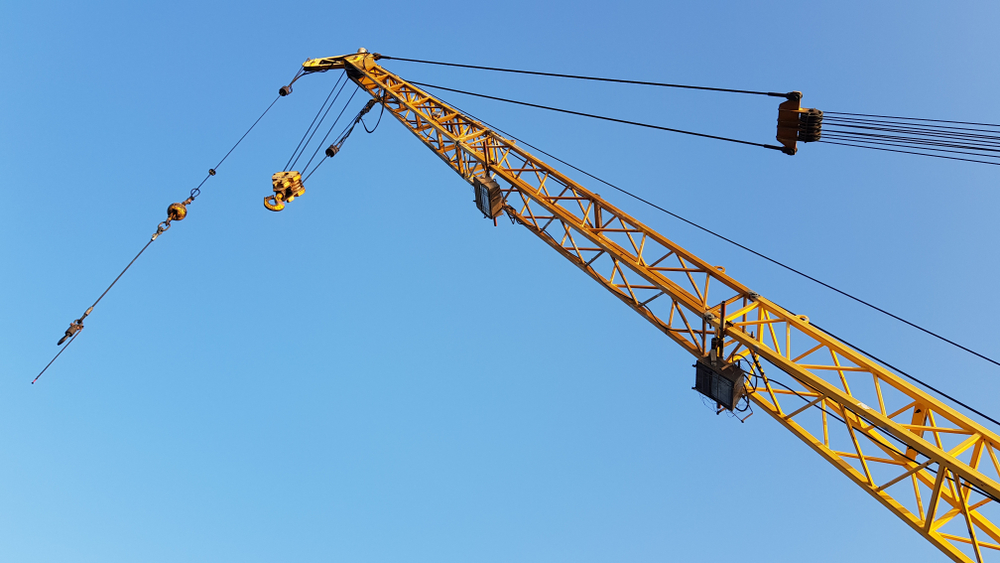
Everything You Need to Know About Crane Booms
There are several components that play a major role in the operations of a given crane, and one of the most notable here is the crane boom. You’ve likely seen crane booms in many settings, even if you’ve never utilized crane rentals or services — they’re the long, extended arms that stretch up into the sky. Fewer people, though, actually know how they work.
At Wagstaff Crane Service, we’re proud to detail the specifications on any crane option within our extensive fleet of crane rental products, which includes all-terrain cranes, crawlers, boom trucks and more. In today’s blog, let’s go over some basics on crane booms and how they work, their various styles, and a few other elements to be aware of when discussing these important components.
How Crane Booms Work
As we noted above, the crane boom refers to the long arm of the crane, which is what allows it to reach such heights and extend over great distances. Generally speaking, they operate in one of two primary ways:
- Lattice boom: For large items and weight demands, the lattice boom is often the best crane boom option, as it can handle massive items with ease. The lattice boom consists of a series of metal tubes and trusses that are assembled in a lattice formation. These booms range anywhere from 50 to 300 feet long, and are generally fixed in nature — meaning they do not extend past their original length. They can swivel, tilt and move side to side, though it’s important to have an operator who knows how to do this without shifting the load too much.
- Hydraulic boom: For cranes that do have the ability to extend, or telescope, the hydraulic boom is the most popular option. These booms can be either fixed or variable in length, and they’re made up of a series of poles powered by pistons. These pistons draw their power from hydraulic fluid that’s pumped into the system, which allows for a much smoother and more precise extension or retraction of the boom as needed. It should be noted that hydraulic booms come in a few sub-varieties as well — there are some that telescope in the traditional way (retracting into itself when being pulled back), and others that fold up along the side of the crane when retracted.
Other Boom Styles and Considerations
In addition to the two primary types of crane booms, there are also a few other styles and variations worth mentioning. These include:
- Articulating boom: An articulating boom is different from a hydraulic or lattice boom in that it’s not one solid piece — instead, it’s made up of a series of connected segments that can move independently from one another. This gives the boom a lot more flexibility in movement, which is why it’s often used in tight spaces where other booms wouldn’t be able to reach.
- Telescoping jib boom: A telescoping jib boom is a variation on the hydraulic boom that’s specifically designed for use with a jib (more on that in a moment). These booms can extend outwards and also rotate, which allows them to place loads in a variety of different positions.
- Jib: A jib is a secondary beam that’s attached to the end of the crane boom, and is used to extend the reach of the boom even further. Jibs come in a few different varieties as well, including fixed and telescoping jibs.
Now that we’ve gone over some of the basics on crane booms, you should have a better understanding of how they work and what role they play in the operations of a crane.
Cranes With Booms Vs. Boom Trucks
In many cases, it can be easy to confuse or mix up crane booms with boom trucks — after all, they both feature a long extending arm, right? However, there are some key differences between the two that are important to understand.
- Boom trucks: Boom trucks are specialized vehicles that come equipped with a hydraulic or articulating crane boom on the back. These vehicles are often used in construction and other settings where heavy lifting is required, but a full-sized crane wouldn’t be practical. Boom trucks are smaller and more maneuverable than cranes, which is one of the main reasons they’re used in these situations.
- Cranes with booms: Cranes, on the other hand, are heavy duty machines that are designed specifically for lifting and moving large loads. Cranes come in a variety of sizes and styles, but they all feature a boom of some kind — be it a hydraulic boom, lattice boom or otherwise. These booms give cranes the extended reach they need to place or remove heavy loads from difficult positions.
Which of these options is right for your needs? Well, that depends on several different factors. For one, you need to consider the size and weight of the load you’ll be lifting — if it’s too large or heavy for a boom truck, then you’ll need to opt for a crane instead. You should also think about the specific needs of your project, as well as any space constraints that might be in place. In general, though, boom trucks are better suited for smaller projects while cranes are better for larger ones.
As you can see, there’s a lot that goes into the design and operation of a crane boom. Now that you know a bit more about them, you can better understand how they play a role in the overall performance of a crane.
For more here, or to learn about any of our quality crane rental products or services, speak to our team at Wagstaff Crane Service today.


